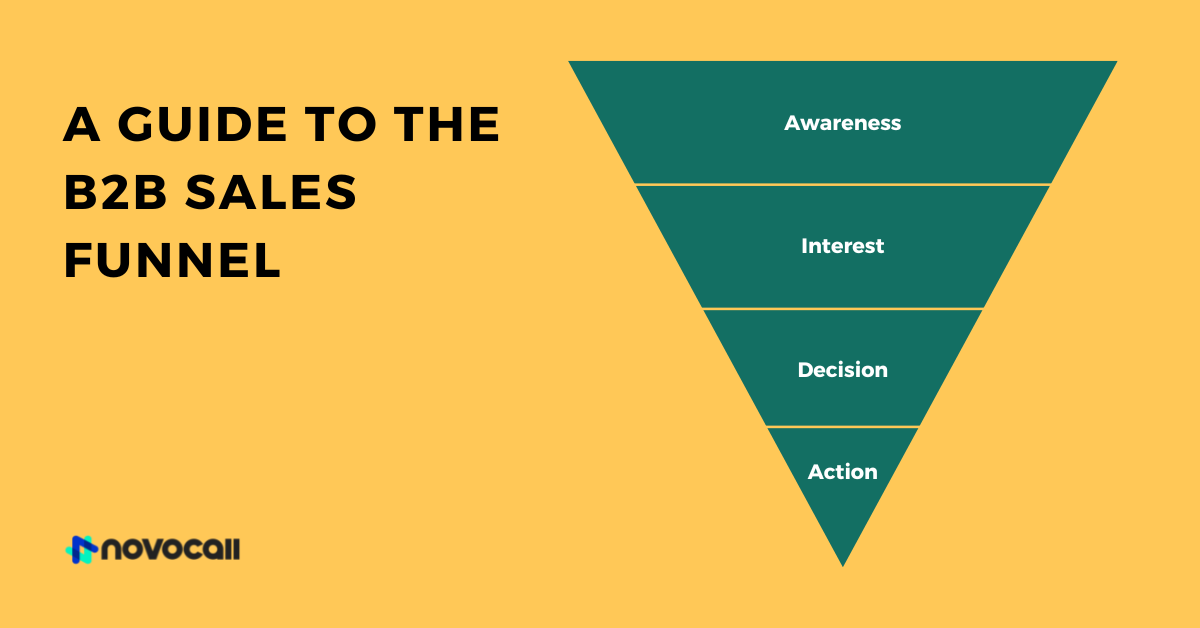


Start driving better conversations.
Novocall will be your new favorite business phone system.


Little drops of water, so the saying goes, make a mighty ocean. Well, each qualifying lead adds up to a business, thus we’d want to be in the lead pool.
But how could these leads just suddenly materialize? Through a technique known as lead creation.
How then do you generate leads? How do you evaluate the success of your marketing initiatives? Does it matter how many views they get? Maybe it has to do with how many shares they receive.
Utilizing data and metrics to direct your sales approach is crucial for helping you make wise business decisions. However, there are a plethora of sales-related metrics to consider when assessing the effectiveness of your lead generation goals and sales pipeline initiatives.
Which figures should you be focusing on?
For this reason, 67% of businesses only use lead generation as a metric to assess the effectiveness of their content.
This blog will assist you in choosing the most exemplary sales-related metrics to address your business’s lead generation goals and sales pipeline objectives and procedures.
The process of adding new potential customers to contact management or marketing software systems is known as the lead generation goal.
This is done in the hopes of guiding prospects through the purchasing process, convincing them to purchase your products, and then turning them into paying clients.
But do you believe a routine lead creation method is adequate in this day of fierce competition? Naah!
As a result, it is necessary to have predefined statistics for your lead generation.
The days of making random cold calls are long gone. Today’s consumers are more knowledgeable and selective about the content they wish to consume. Customers are more likely to use the company’s services.
Customer turnover can be reduced if organizations are successful in resolving complaints during the initial engagement and in managing customer expectations.
As a result, companies today must invest in the process of generating qualified leads through effective data collecting. And we’re here to assist you in every way.
If you look closely, lead generation and bartering are extremely similar.
People exchange their contact information for valuables like access to a webinar, vouchers, a free consultation, or an eBook in the modern digital environment.
However, many organizations struggle to conduct this business correctly and regrettably miss out on acquiring paid clients or even organic leads. This is due to the fact that most marketers believe that calculating the goals prior to helping and including realistic calculations is always a win-win!
According to a survey, automation provides two times more profitable leads than conventional sales.
Calculating lead generation goals is therefore a very effective way for helping you assess the state of the industry and staying one step ahead of the competition.
Did you know that more than 55% of marketers devote 50% of their spending to lead generation?
That’s because increasing sales of your goods or services are one of the most significant advantages of implementing lead generation.
Through the right calculation of lead generation goals, you can target your ideal customers based on their demographics and geography. This assists you in identifying potential sales markets and audiences.
Even before addressing leads, the sales team might do some thorough research on them. Finding loyal clients is advantageous for your business.
Finding high-quality leads and increasing conversions are both possible with efficient lead generation software like HubSpot and Salesforce etc. As a result, the number of customers and sales increased.
A lead generation strategy begins with an end objective for today’s B2B marketers. This objective can be a target amount of net new consumers or net new revenue.
But how do you turn those goals into lead-related ones so that you can scope out your demand creation plan and create it?
There are a few numbers you need to be aware of before we can determine how many marketing leads you’ll need this year.
You require to know the Average Sales per Customer (APC) to determine the average number of customers you need to achieve your inbound revenue goal.
Suppose, your average revenue goal is $600,000 and ASP is $10,000. Now, divide the average revenue goal by ASP. By doing this, you now know that you will need 60 new customers to reach your $600,000 revenue objective.
Now, how to determine how many leads you need to generate 60 customers?
Let’s assume the lead-to-customer conversion rate is 2%. Now divide the number of customers required by this rate. Hence, you will get the number 3000. You need 3000 leads to get 60 customers.
A successful B2B lead generation plan must be implemented in order for a firm to be successful. However, this is not an easy task.
How do you make sure your product or service has a consistent flow of leads while also calculating the goals at the appropriate time?
Depending on your sector and target market, a different procedure will be appropriate for your unique firm.
Meeting potential leads where they are, building authority and trust, and creating efficient lead capture forms and pages are still crucial stages.
You must understand the proper formula for calculating lead generation goals if you want to increase this.
Let’s look into lead-generating calculation methods and tactics that have been shown to produce high-quality leads and boost revenue.
Since each firm has its own distinct set of objectives, target market, and operational procedures, the general concept that one size fits all cannot be applied to all leads.
In order to determine the appropriate metrics for your company, you must take your business goals and anticipated revenue into account when calculating your lead generation goal.
The next step is to calculate the contribution of each new customer to our specified revenue target. And how many additional clients you will require to reach this specific objective.
Assume that a new client is worth $10,000 over the course of their relationship.
Now that we know this, we can calculate how many new clients we will need to acquire in order to accomplish our $500 000 revenue target. To reach that level in this instance, we will require 50 additional consumers.
It’s fantastic to have a large list of leads, but if you don’t convert them into paying customers, your firm will soon be shut down, thus it makes sense to learn more about lead conversion metrics.
Finding out how many of your leads turn into opportunities is known as the lead conversion rate.
Calculating your lead conversion rate is simple. Simply multiply by 100 after dividing the total number of conversions by the total number of leads. The lead conversion formula looks like this.

Your lead conversion rate is 10%, for instance, if your monthly pay-per-click (PPC) advertising campaign generates 150 leads and 15 of them become customers.
This indicates that you may anticipate that 10% of leads will convert into paying customers for future PPC Management services and campaigns.
What exactly constitutes a high conversion rate for your company? What ought to be the objective if we want to advance? How can you know if your lead conversion rate is working satisfactorily or poorly?
To concentrate on the goal computation, the conversion rates must be adjusted, and the previous month’s progress must be compared.
There is no one-size-fits-all solution despite studies exploring conversion rates across various businesses and marketing methods.
Conversion objectives can vary greatly depending on a number of variables, including region, your target demographic and their habits, the key action type, and more.
We can still get a basic idea of what is high or low by looking at average conversion rates.
To suggest that metrics are important when it comes to online lead creation is an understatement. One of the most crucial skills a marketing team can have is the ability to monitor the performance of its lead-generating activities.
Success serves more than simply your own satisfaction, of course. You may repeat what works for future efforts by observing what motivates successful online lead generation with your target demographic and what doesn’t.
Long-term, data-driven marketing strategies save you money and time while increasing the return on all of your investments.
It’s simple to become distracted by meaningless metrics for lead generation.
Top lead-gen KPIs are frequently stated as impressions, click-through rates, outreach volume, bounce rate, etc., but there’s an issue.
You cannot infer anything about lead production from these metrics.
Concentrate on qualified lead volume if you want a better indicator of your progress. The ultimate goal of lead generation is to generate income, not information about the production of your sales force.

Shweta is a growth marketing specialist who is working with 2xSaS. She creates content that converts website visitors into paying customers for SaaS companies. In her free time, she likes driving around the city & hanging out with her friends.
Related articles
Subscribe to our blog
Get insights & actionable advice read by thousands of professionals every week.

